Ever heard of Pamplina? If not, you're in for a treat! This hidden gem from Filipino-Spanish cuisine is what happens when you take humble ingredients and cook them with a whole lot of patience and love. Think tender, fall-off-the-bone pork, smoky chorizo and creamy white beans swimming in a rich broth that'll make you want to lick your bowl clean.
Pamplina means "unimportant" in Spanish slang, but there's nothing unimportant about these flavors. While some folks might tell you it's like callos without the tripe, or that it's a clever way to use up leftover meats, all you need to know is that it's pure comfort in a bowl. It's especially popular in Manila's historic Quiapo district, where families break this out during fiestas to everyone's delight.
Jump to:
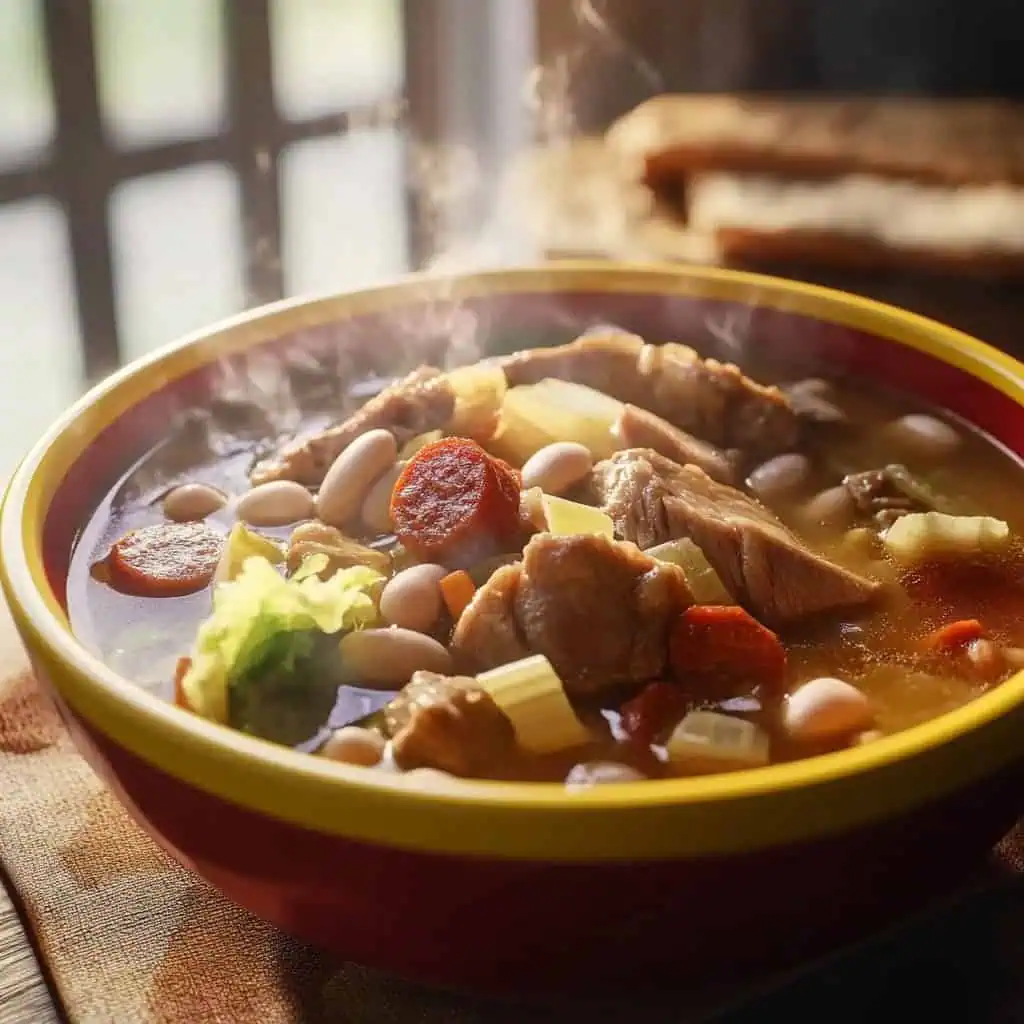
Why You'll Love This Recipe
- Rich, complex flavors developed through slow-cooking
- Budget-friendly using affordable cuts of meat
- Makes impressive leftovers that taste even better the next day
- Perfect balance of meat, vegetables, and legumes
- A taste of Filipino-Spanish heritage cuisine
- Versatile dish that works as a main course or shared dish
Ingredients
This recipe combines pork leg, white beans, and Spanish chorizo to create deep, comforting flavors through slow cooking. The pork leg provides rich collagen that transforms into a silky broth, while white beans add creaminess and absorb the savory flavors.
Spanish chorizo contributes a distinctive smoky-paprika essence that defines the dish's character. The vegetables (potatoes, cabbage, tomatoes, onions, and garlic) balance the richness with freshness and texture. Bay leaves add subtle aromatic notes, while fish sauce enhances the overall umami.
This thoughtful combination reflects Filipino-Spanish culinary ingenuity, transforming humble ingredients into an extraordinary meal through patience and proper technique.
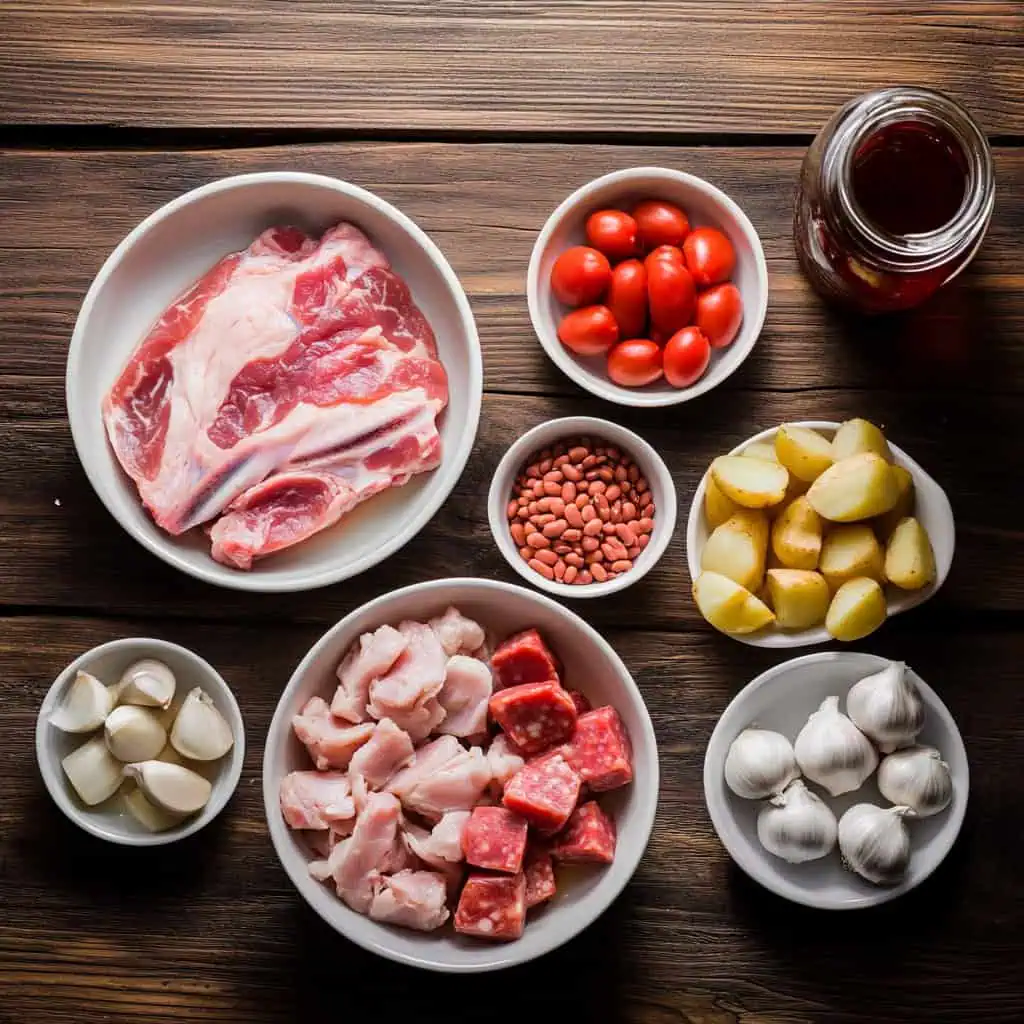
- 1.5 kg pork leg (pata), cut into sections
- 300 g white beans (cannellini or white kidney beans), soaked overnight
- 3-4 pieces Spanish chorizo, sliced
- 2 white onions, chopped
- 1 whole garlic head, minced
- 2 tomatoes, sliced
- 3 potatoes, cubed
- 1 small cabbage, cut into strips
- 2 bay leaves
- Fish sauce (patis) to taste
- Freshly ground black pepper
- Olive oil
Equipment
- Large Heavy-Bottom Pot (Kaldero) - For main cooking to ensure even heat distribution
- Strainer - For draining and rinsing pork to remove impurities
- Sharp Knife - For precisely cutting meat and vegetables
- Cutting Board - For safe and hygienic food preparation
- Wooden Spoon - For gentle stirring without scratching the pot
- Measuring Cups and Spoons - For accurate ingredient measurements
- Separate Frying Pan - For preparing the chorizo and capturing its flavorful oils
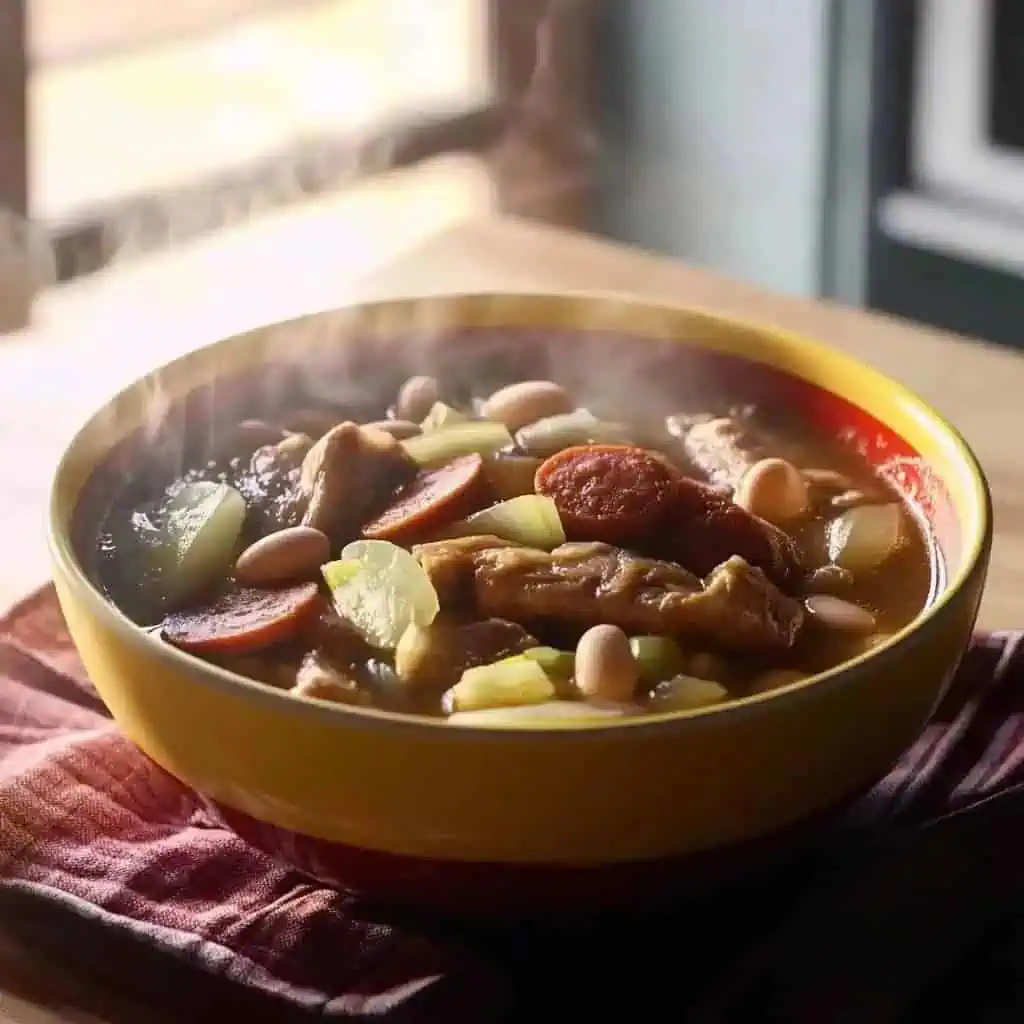
How To Make
- Begin by soaking white beans overnight in cold water. The next day, bring a pot of water to boil. Add pork leg pieces and boil for 10 minutes. Drain and rinse the pork well under running water to remove impurities.
- In a clean, heavy-bottomed pot, heat olive oil over medium heat. Add minced garlic and cook until fragrant (about 30 seconds). Add chopped onions and cook until translucent and soft (3-4 minutes).
- Add the cleaned pork leg pieces and brown them on all sides (3-5 minutes per side at medium-high heat). Once browned, add sliced tomatoes and cook for 2 minutes until they start to soften.
- Add the soaked and drained white beans and bay leaves. Pour in enough water to completely cover the meat and beans. Bring to a boil, then reduce heat to low. Simmer gently for 1 hour, checking occasionally to ensure there's enough liquid.
- While the stew simmers, prepare the chorizo. In a separate pan, heat a small amount of olive oil and gently pan-fry the sliced chorizo until fragrant. Transfer both the chorizo and its flavorful oil into the main pot.
- Add cubed potatoes to the pot. Season with fish sauce and freshly ground black pepper to taste. Continue to simmer on low heat for another 40 minutes, or until the meat is tender enough to fall off the bone and the potatoes are cooked through.
- Add sliced cabbage and cook for just 5 more minutes – you want it tender but still slightly crisp. Turn off the heat and let the stew rest for 15 minutes before serving.
- Serve Pamplina piping hot in bowls with steamed white rice on the side.

Tips from Lola's Kitchen
- Bean Preparation: Always soak beans overnight in cold water for even cooking and to reduce cooking time
- Pork Cleaning: Never skip the initial boiling and rinsing of pork – this crucial step removes impurities for a cleaner-tasting broth
- Low and Slow: Cook on the lowest possible heat for the most tender meat – patience is key to this dish's success
- Seasoning Timing: Add salt or fish sauce only after beans are tender to prevent tough beans that won't soften
- Resting Period: Allow the stew to rest for 15 minutes before serving – this helps flavors meld together beautifully
- Make Ahead: This dish tastes even better the next day, making it perfect for preparing in advance
Substitutions
- Meat Options: Replace pork leg with pork shoulder or beef shank if desired
- Bean Varieties: Substitute white beans with garbanzo beans or red kidney beans
- Sausage Alternatives: If Spanish chorizo is unavailable, local longganisa can work but will alter the flavor profile
- Tomato Options: Use canned diced tomatoes (1 cup) when fresh tomatoes aren't in season
- Greens Variation: Swap cabbage with pechay or bok choy for a different texture
Troubleshooting
- Too Watery: If the stew is too thin, simmer uncovered for 15-20 minutes to reduce and concentrate flavors
- Too Thick: If too dense, gradually add hot water or broth ¼ cup at a time until desired consistency is reached
- Tough Meat: If meat isn't tender enough, continue cooking on low heat for 30-minute increments until fork-tender
- Beans Still Hard: Beans not softening is usually due to adding salt too early or using old beans – cook longer before adding salty ingredients
- Bland Flavor: Enhance with additional fish sauce, a splash of lemon juice, or more chorizo oil from the pan
Storage & Reheating
- Refrigeration: Store in an airtight container in the refrigerator for up to 3 days
- Freezing: Portion and freeze in freezer-safe containers for up to 3 months
- Thawing: Let frozen stew thaw overnight in the refrigerator for best results
- Reheating: Warm gently on the stovetop over medium-low heat, adding a splash of water if needed to maintain consistency
- Flavor Improvement: Many find the flavors develop and improve after a day in the refrigerator
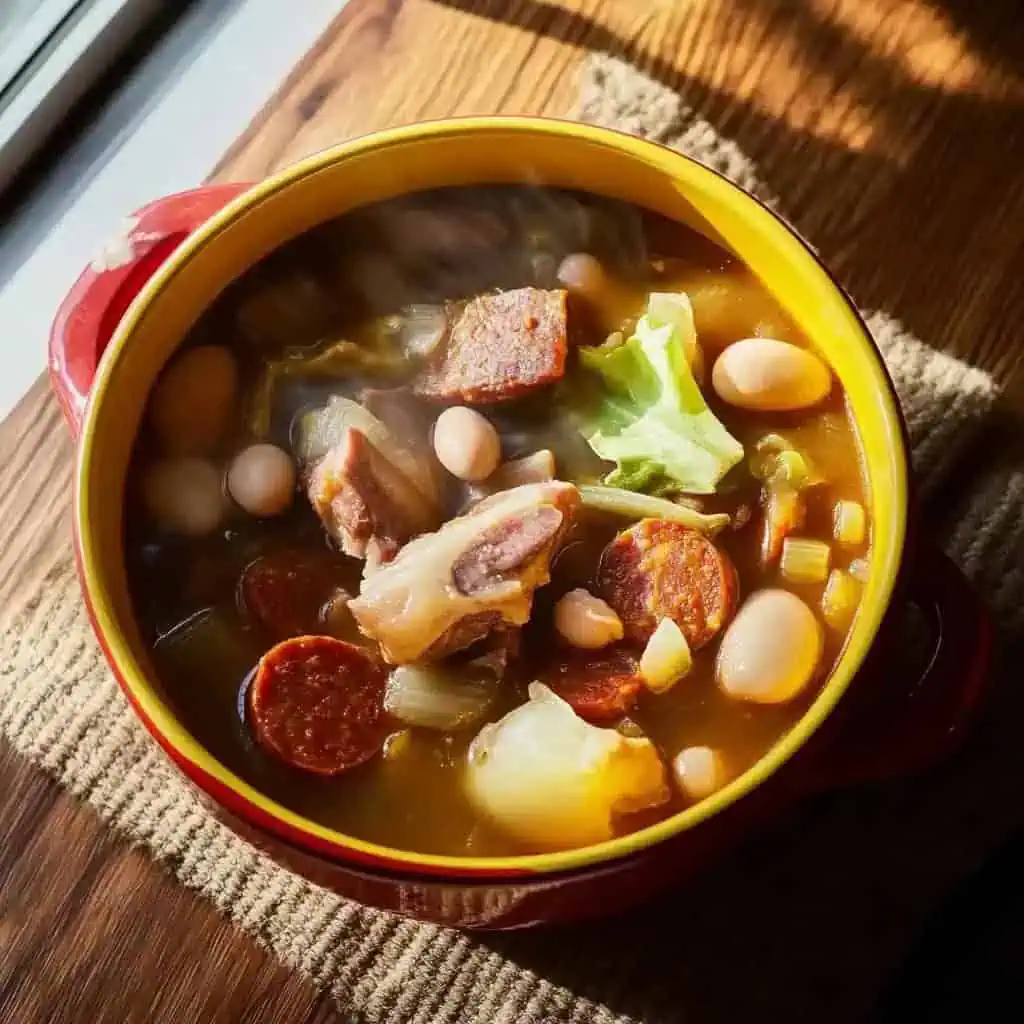
FAQ
What does "Pamplina" mean?
From Spanish colloquial language, it means "something unimportant," referring to the humble ingredients used that transform into something special.
Can I make this in a slow cooker?
Yes, after the initial pork boiling step, transfer everything to a slow cooker and cook on low for 8 hours or on high for 4-5 hours.
Is this similar to Callos?
It has a similar flavor profile but without tripe, making it more accessible for those who don't enjoy offal.
Can I use canned beans instead of dried?
Yes, add drained and rinsed canned beans in the last 30 minutes of cooking to prevent them from breaking down too much.
How can I make this dish spicier?
Add 1-3 siling labuyo (bird's eye chilies) either whole or sliced, depending on your heat preference.
Can this be made ahead for a party?
Absolutely! The flavors actually improve when made 1-2 days ahead. Simply reheat gently before serving.
What's the best way to serve Pamplina for a gathering?
Serve family-style in a large, wide bowl with steamed rice on the side, crusty bread for dipping, and perhaps some atchara (pickle papaya) for contrast.
Related
Looking for other recipes like this? Try these:
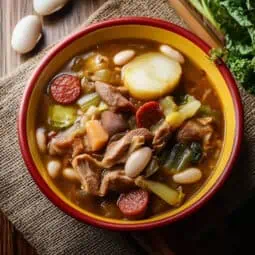
Authentic Filipino Pamplina Recipe (Slow-cooked Spanish-Filipino Pork Stew)
Equipment
- Large Heavy-Bottom Pot (Kaldero) For main cooking to ensure even heat distribution
- Strainer [Salaan] For draining and rinsing pork
- Sharp knife (kutsilyo) For cutting meat and vegetables
- Cutting board (Sangkalan) For preparation
- Wooden spoon (sandok na kahoy) For stirring without scratching pot
- Measuring cups and spoons (Panukat) For accurate measurements
- Separate frying pan For chorizo preparation
Ingredients
For the Meat Base
- 1.5 kg pork leg pata, cut into sections
- 300 g white beans white kidney beans/cannellini, soaked overnight
- 3-4 pieces Spanish chorizo sliced
- 2 white onions sibuyas, chopped
- 1 whole garlic head bawang, minced
- 2 tomatoes kamatis, sliced
Vegetables
- 3 potatoes patatas, cubed
- 1 small cabbage repolyo, cut into strips
- 2 bay leaves dahon ng laurel
Seasonings
- Fish sauce patis to taste
- Freshly ground black pepper paminta
- Olive oil
Instructions
- Begin by soaking your white beans overnight in cold water - this ensures they'll cook evenly. The next day, start your Pamplina by bringing a pot of water to boil. Add your pork leg pieces and let them boil for 10 minutes. Drain and rinse the pork well under running water to remove any impurities.
- In a clean, heavy-bottomed pot, heat a few tablespoons of olive oil over medium heat. Add minced garlic and cook until fragrant, about 30 seconds. Add your chopped onions and cook until they become translucent and soft, about 3-4 minutes.
- Add the cleaned pork leg pieces to the pot and brown them on all sides - this should take about 3-5 minutes per side at medium-high heat. Once browned, add your sliced tomatoes and cook for 2 minutes until they start to soften.
- Add your soaked and drained white beans and bay leaves to the pot. Pour in enough water to completely cover the meat and beans. Bring this to a boil, then reduce the heat to low. Let it simmer gently for 1 hour, occasionally checking that there's enough liquid.
- While the stew simmers, prepare your chorizo. In a separate pan, heat a small amount of olive oil and gently pan-fry the sliced chorizo until fragrant. Once done, transfer both the chorizo and its flavorful oil into the main pot.
- Add your cubed potatoes to the pot. Season the broth with fish sauce and freshly ground black pepper to taste. Continue to simmer on low heat for another 40 minutes, or until the meat is tender enough to fall off the bone and the potatoes are cooked through.
- Finally, add your sliced cabbage and cook for just 5 more minutes - you want it tender but still slightly crisp. Turn off the heat and let the stew rest for 15 minutes before serving. This resting time allows the flavors to meld together perfectly.
- Serve your Pamplina piping hot in bowls with steamed white rice on the side. Remember, this stew actually tastes even better the next day, so don't hesitate to make it in advance.
Tips from Lola's Kitchen
- Soak beans overnight in cold water to ensure even cooking
- Don't skip the initial boiling and rinsing of pork - it removes impurities
- Cook on the lowest possible heat for the most tender meat
- Add salt only after beans are tender to prevent tough beans
- Let the stew rest for 15 minutes before serving for flavors to meld
Nutrition
The Story Behind Filipino Pamplina
Deep in the historic streets of Quiapo, Manila, where Spanish colonial heritage still echoes through century-old houses, Pamplina tells a fascinating story of Filipino culinary ingenuity. This hearty stew, whose name ironically means "something unimportant" in Spanish slang, emerged from the creative spirit of Filipino-Spanish households who knew that true culinary magic often comes from humble beginnings.
During the Spanish colonial period, wealthy households would prepare elaborate dishes like callos and cocido for special occasions. But in the everyday kitchens of Manila, home cooks created their own version using more affordable cuts of meat and simple ingredients. They discovered that with patience and skill, these "unimportant" ingredients could transform into something extraordinary. This practicality gave birth to Pamplina, a dish that would become a testament to Filipino resourcefulness.
What makes Pamplina particularly special is its connection to Manila's feast culture. In Quiapo's Spanish-heritage homes, this dish became a fiesta favorite, served alongside more elaborate preparations. Some families passed down recipes that used leftover meats from nilaga or puchero, while others developed versions specifically using inexpensive cuts. Each family's recipe carried its own story, its own secret to achieving that perfect, rich flavor.
Today, Pamplina remains somewhat of a hidden treasure in Filipino cuisine. Unlike its more famous cousins like callos or menudo, it's not commonly found in restaurants. Instead, it lives on in family kitchens, especially in historic districts of Manila, where the recipe is passed down through generations. The dish embodies the Filipino talent for transformation - turning simple ingredients into something truly remarkable through patience, technique, and love for good food.
Whether made with fresh meat or leftovers, with more or fewer vegetables, every pot of Pamplina carries forward this legacy of Filipino-Spanish culinary heritage. It reminds us that sometimes the most "unimportant" things can bring the most joy, especially when shared around a family table on a cool rainy day in Manila.
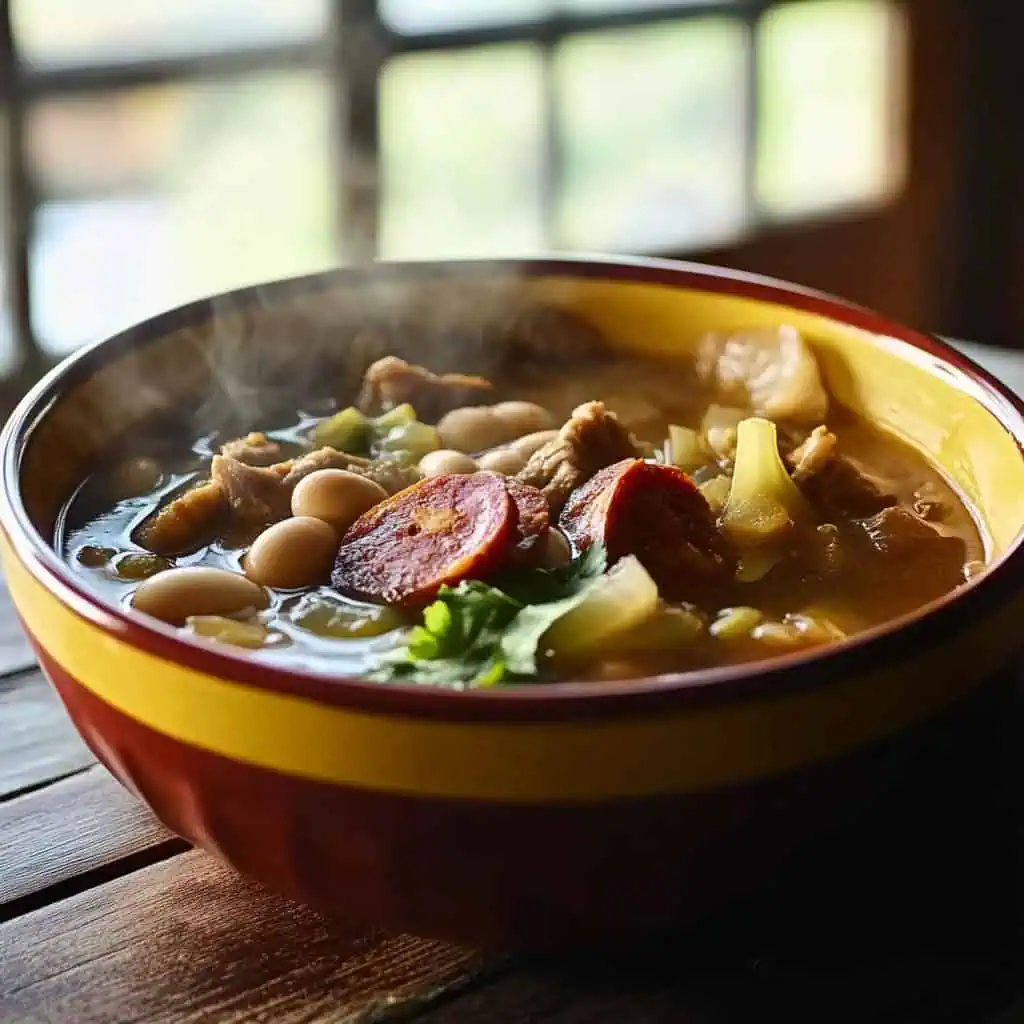









Comments
No Comments